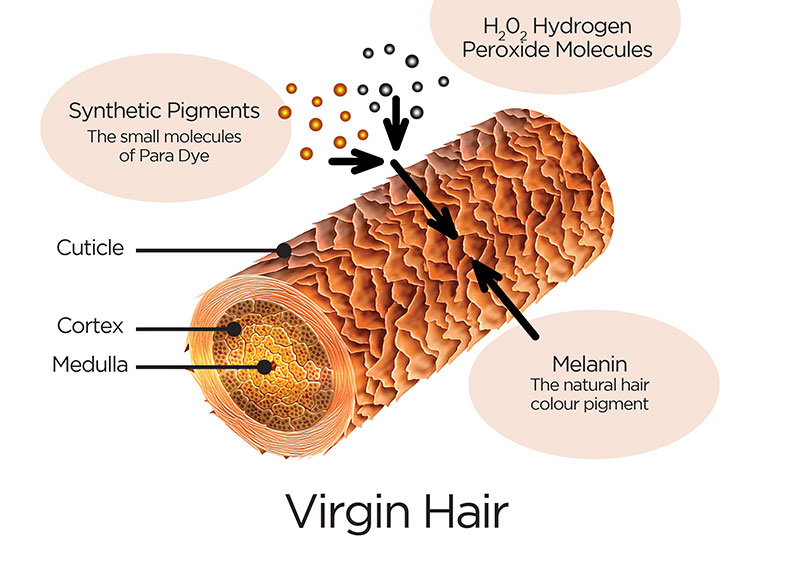Hair gets its pigment from melanin before birth and human hair color depends on the type amount and distribution of melanin in the middle layer of the hair shaft

Hair Pigmentation: The Role of Melanin

Hair color is a fascinating aspect of human genetics that varies widely among individuals. While some of us are born with luscious locks of blonde, brunette, red, or black hair, others develop gray or white hair as they age. Have you ever wondered why this happens? The answer lies in the pigment called melanin, which determines the color of our hair.
What is melanin?
Melanin is a pigment that gives hair, skin, and eyes their color. It is produced by special cells called melanocytes, found in the middle layer of the hair shaft called the cortex. The amount, type, and distribution of melanin in the hair shaft dictate the color and shade of our hair.
Types of melanin and hair color
There are two main types of melanin that influence hair color: eumelanin and pheomelanin. Eumelanin is responsible for brown and black hair, while pheomelanin is responsible for red and blonde hair. The ratio of these two pigments, along with the density and distribution of melanin in the hair shaft, determine the final hair color we see.

Developing hair color before birth
Hair begins to develop its pigmentation before birth. As the fetus grows, melanocytes migrate to the hair follicles, where they produce melanin. The type and amount of melanocytes present in hair follicles vary among individuals, leading to the wide range of hair colors observed in humans.
Factors influencing hair color
Several factors can influence hair color. Genetic factors play a significant role in determining the type and amount of melanin produced by melanocytes. These genes can be inherited from parents, grandparents, or other family members. Environmental factors, such as exposure to sunlight and chemical treatments, can also affect the production and distribution of melanin in hair.
The graying of hair
As we age, the production of melanin decreases, causing our hair to turn gray or white. The exact mechanism behind this graying process is still not fully understood. However, it is believed to be a combination of genetic, environmental, and biochemical factors. The gradual loss of melanocytes and the failure of melanocytes to produce melanin contribute to the graying of hair over time.
Conclusion
Understanding the role of melanin in hair pigmentation sheds light on the factors that contribute to hair color variations and the graying process. While genetics play a crucial role in determining our natural hair color, external factors and the natural aging process can also influence its appearance. So, whether you embrace your natural hair color or experiment with different shades, remember that the beauty of hair lies in its diversity and the fascinating science of melanin.
Share
Related Posts
Quick Links
Legal Stuff

